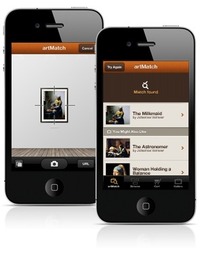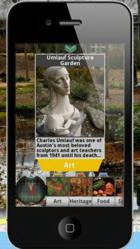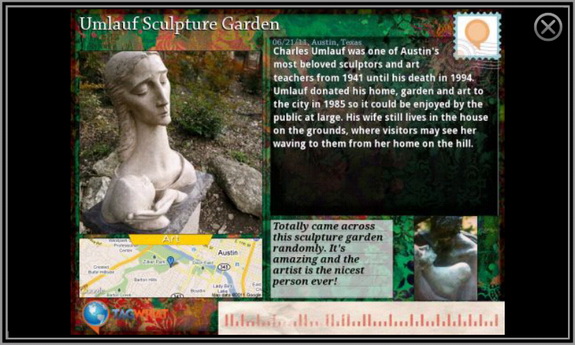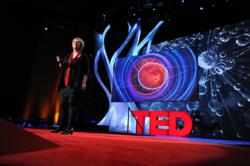When the first professional-grade cameras came out that could shoot both stills and high-quality video, one of the first questions some photographers asked was “Why?” Since then, the answer is becoming clearer.
Short videos are being used to enrich the usefulness of millions of corporate and commercial websites, blogs, digital magazines, advertising, and e-books. The hybrid cameras can make it more cost-effective to add produce online video, because publishers of online content can hire a single creative professional to capture both stills and video while shooting on location, or interviewing a subject.
Here are five news items that illustrate market projections and how some creative professionals are developing new business models, products, and services to meet the demand.
BrightRoll Survey Shows Agencies Expect to Spend More on Online Video
According to a survey of advertising agencies conducted by the video ad network BrightRoll, “Media buyers predict online video will see the largest overall increase in spend in 2011.” The survey found that “65% of respondents plan to reallocate campaign dollars from TV to online video.” BrightRoll cited a recent eMarketer study that showed the average number of hours Americans spend online has been growing by 6% a year while the average number of hours spent watching TV has been declining 1% annually.
Although the cost of online video is still regarded as a barrier to more widespread adoption, 27% of the agencies surveyed said that more than half of their RFPs in 2010 included an online video component.
LINK
BrightRoll Video Advertising Report, Q1, 2011
E Video Productions Makes Video Marketing Affordable to Local Businesses
 E-Video Productions in Forked River, New Jersey is offering small-business owners a “12 Months of Video” package at a low monthly fee. According to partner Darcie King, the program “allows businesses to budget for their video content without having a large up-front cost. Video content is so important in this current market, and we want to make sure it’s available to everyone.”
E-Video Productions in Forked River, New Jersey is offering small-business owners a “12 Months of Video” package at a low monthly fee. According to partner Darcie King, the program “allows businesses to budget for their video content without having a large up-front cost. Video content is so important in this current market, and we want to make sure it’s available to everyone.”
The plan includes the production of:
- six “Expertise Videos” in which the business owner or spokesperson can demonstrate their knowledge of a certain subject;
- four customer-testimonial videos;
- two videos that combine highlights of the expertise videos and testimonial videos.
“We noticed that a lot of businesses wanted to get into doing video, but didn’t know where to start,” states E Video partner Kristopher King. “We created this plan to make it easy and affordable for anyone who wants to get in front of the YouTube generation.”
LINKS
Press Release: Video Production Studio Opens in Lacey
Photo Festival to Showcase Outstanding Videos Shot on Hybrid Cameras
Some of the finest examples of videos shot with cameras that can capture both stills and high-resolution video will be exhibited to a live audience in a “film-fest” format on October 21 at the Goat Farm Arts Center in Atlanta, Georgia.
The evening of curated videos is part of the Atlanta Celebrates Photography festival, which seeks to nurture and support photographers, educate and engage audiences, promote diverse photography, and enrich Atlanta’s cultural scene.
In the open call for entries, the show’s curators emphasize that “We can’t accept videos shot with a dedicated video camera. We specifically want to see what the hybrid still/video camera creates, and learn how it’s being used to do more than shoot stills. In doing so, we learn about what ‘moves’ us as an audience, and as videographers, and photographers.”
They will be looking for works that are expressive, engaging, emotionally satisfying, or envelope-pushing: “We want to see your best work. It might be a low-res video shot on an old cellphone or an HD beauty shot on your brand-new 5D Mark III.”
A $250 award for “Best in Show” will be awarded by guest jurors Tom Brown, vice president of original productions for Turner Classic Movies and Michael Kochman, creative director of Turner Image Management.
Entries are due September 15 at 11:59 pm (EST). There is no charge to enter.
LINKS
Atlanta Celebrates Photography
ACP Film Series: Open Call for Entries
Red Square Visual Arts Produces ‘Video Lookbook’ for Fashion Marketing
Corey Weiner of Red Square Visual Arts in Boca Raton, Florida, is a former advertising account executive who began to offer photography services to architecture, design, and travel clients in 1997. Over the past two years, his services have segued into motion-picture services for a broad spectrum of projects, including fashion video look books, shows,
behind-the-scenes, and other promotional films.

Weiner says the web-based video look book is becoming a staple of fashion marketing: “From early Egyptian art to today’s haute couture magazines, fashion has always been seen as a flat, static, two-dimensional stiff image. The only time you saw a moving garment was either in person or a feature film. But think about what Audrey Hepburn did for the ‘little black dress’ and that’s the power of the moving picture.”
Recently, Red Square Visual Arts produced a two-minute film that features clothes from the new collection of Dear Earth, an organic clothing line designed by Miami-based Danielle Moore. The film features fully licensed music and a link back to Dear Earth’s website so consumers can purchase what they have seen. As the video gets picked up by fashion blogs and social networking sites, Moore and Weiner will track Facebook and Twitter comments, blog posts, and Internet traffic generated back to Dear Earth’s e-commerce site. The entire cost of adding video production to an existing catalog shoot was $900.
“Just a few years ago, producing a video like this would have been cost-prohibitive for a small designer,” says Weiner. “And it would have cost even more to televise it to people around the world. YouTube and other online channels allow you to see exactly which point in the video is most interesting to people, and how many are clicking to purchase your product.”
LINKS
Press Release: Fashion Videographer Now Producing Video Lookbooks
Video: Dear Earth:: In the Name of Love
CineSkates Compact Camera Sliders Delivers Fluid Video Shots
 Cinetics is launching CineSkates™, a lightweight, professional-grade camera slider that will allow photographers/videographers to capture stable, high-resolution video footage without lugging heavy gear. The device also makes it possible to achieve fluid camera movement in space-constrained environments where traditional camera sliders, dollies and cranes are too cumbersome.
Cinetics is launching CineSkates™, a lightweight, professional-grade camera slider that will allow photographers/videographers to capture stable, high-resolution video footage without lugging heavy gear. The device also makes it possible to achieve fluid camera movement in space-constrained environments where traditional camera sliders, dollies and cranes are too cumbersome.
“Today’s cameras allow you to take high-resolution video in a small form factor, but the result can be shaky and distracting if you don’t have stability.” explains Cinetics founder Justin Jensen. “I wanted a camera slider that was lightweight and mobile for professional events or even spontaneous shots.”
Developed in an MIT MediaLab class, CineSkates is a unique set of wheels that attach to a tripod and enable the user to put their video in motion. They are designed to work specifically with the GorillaPod Focus™ tripod, and a ballhead, like the BallHead X, also from JOBY®.
Jensen envisions CineSkates being used for product demo videos, wedding films, music videos and other high-quality productions. He says the device enables filmmakers to produce shots that have previously been difficult to capture with bulky equipment. For example, using CineSkates with a DSLR that shoots high-res video enables videographers to produce:
- Arcing video shots that rotate around objects
- Sliding video shots that push or pull the subject into focus
- Rolling video shots that glide over the subject
- Time-lapse video shots that move the camera slowly and smoothly
- Panning video shots that scan a wide area
- “Worm’s eye view” video shots that slide just above the floor
CineSkates are available to preorder through Kickstarter at cinetics.com/kickstarter for a limited time, reduced price of $150 and $275 for the complete CineSkates System that includes the GorillaPod Focus and Ballhead X.
LINKS
Press Release: CineSkates Compact Camera Sliders Delivers Fluid Video Shots










